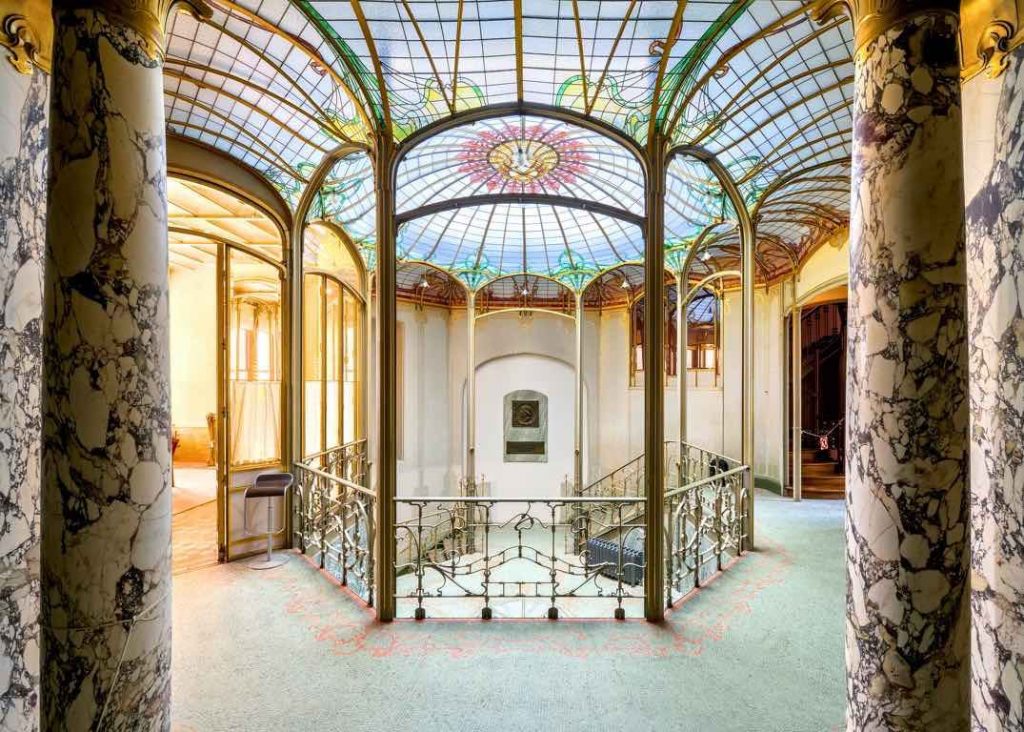A Revolution in Stone, Glass & Iron: How Victor Horta and Brussels Forged the Dawn of Modern Architecture
Published 29th October 2025 03:21 GMT
By Rojina Bohora

Image Credit: We Love Brussels
1. The City of a New Era
At the turn of the 19th into the 20th century, the capital of Belgium burst into improbable growth. Brussels more or less tripled in size during the final two decades of the century, unlocked by industry, transit expansion and bourgeois ambition. In that heady rush, a new kind of home emerged for the affluent: the townhouse not bound to classical formality but seeking expression, innovation and a connection to nature.
Into this swirling context stepped a small, daring generation of architects willing to tear down aesthetic conventions — to re-conceive what a house could be. Out of them there rose an architectural style so radical it still resonates today.
2. The Birth of an Aesthetic — and the First Manifesto
Among the young collection of architects, the name Victor Horta stands boldly. Born in Ghent in 1861 and trained in Brussels, he might have trodden well-worn classical paths — yet he plunged instead into the possibilities of glass, iron, light and organic form.
In 1892–93, he completed the masterpiece known as Hôtel Tassel (Rue Paul-Émile Janson 6, Brussels) — widely regarded as the first true Art Nouveau building.
This house is more than a home: it is the manifesto of a new architecture. You walk in and you sense structural columns of iron, abundant light, curving vegetal railings, a central stairway under a glass roof. The façade and plan abandon the rigidity of classical syntax and instead immerse you in light-filled space, dynamic circulation and decor that flows with purpose.
At Hôtel Tassel the past has been subverted: the classical base and entablature become “organic springs,” the iron beam riveted visibly on the façade declares technology and craft as aesthetic. One commenter observes that “the principle of a double house connected by a glass-covered circulation area” adopted here marked the revolution.
3. Nature, Technology, and the Stream of Life
Step through the threshold and Horta’s intention is clear: you must feel a new era, not just see it. Nature, not classical order, reigns supreme. Metal and glass are celebrated, not hidden. The building’s stone skin appears “stretched like a membrane,” as one description puts it — suggesting the edifice is alive, breathing, reaching upward.
Horta’s interiors deploy glass skylights, winter gardens, wrought-iron tendrils, mosaics, tiles, and curated furniture — all elements of a unified whole. This is the notion of the Gesamtkunstwerk — the total work of art — where architecture, decoration and craft converge.
His later house-studio (1898–1901) in Brussels, today the Horta Museum, makes it explicit: a central stair flooded with light, the boundary between garden and interior blurred, the building as nature’s ally.
4. The Future Emerges from Brussels
What is breathtaking is how fast the style propagated. Within less than a decade, the bold lines, the flourish of ornamental still functional, the open spaces, the visible iron and glass—this wasn’t merely a decorative whim. It was the origin of modernism in architecture. Many of the theories and forms that would dominate 20th-century design trace their lineage here.
In Brussels alone, Horta’s major town houses — Hôtel Tassel, Hôtel Solvay, Hôtel van Eetvelde and his own home/workshop — are inscribed by UNESCO as emblematic of this epoch-shifting moment.
5. Why This Still Matters — and Thrills
You might ask: “Isn’t this just pretty architecture?” Far from it. The revolution is structural, cultural and philosophical.
* Structure: Iron and glass openly used; decoration integrates with function. The ornament is not mere “skin,” but expresses structure, materiality, and purpose. As Horta insisted, “the science of construction, the knowledge of materials, is the support of artistic expression.”
* Cultural: A late-19th-century society caught between industrial exuberance and search for meaning found in the Art Nouveau interface a new articulation — nature, movement, fluidity, light.
* Philosophical: The building becomes a holistic experience. One no longer simply dwells in compartments; one flows through light, surface, ornament, material. The aesthetic is experiential: you feel uplifted, calmed, inspired, connected.
If you stand before one of Horta’s façades in Brussels, you witness more than a house. You witness the moment when architecture made a radical turn — not just ornamenting the old, but inventing the new.
6. In Conclusion: The Dawn of What Was to Come
So here we are, in a modest Brussels townhouse of 1893, where the seed of modern architecture was planted. Where curved iron-rails lead your eye like a vine; where skylights flood once cramped interiors with daylight; where staircases aren’t buried but celebrated; where no detail is too small to be part of the whole.
And from this one fragile seed grew the towering tree of modern architecture. The language of steel, space, transparency and integration which dominates our skylines, our museums, our corporate headquarters — it echoes back to those early buildings in Brussels.
In the end, what Horta and his peers taught us is this: that a home can be art, and art can be life-giving. And thus architecture ceases being mere shelter and becomes a manifesto for our age.
If ever a building deserved to be called a turning-point, it’s that early Art Nouveau townhouse in Brussels. And if ever an architect deserves to be called a modernist pioneer, it is Victor Horta.
